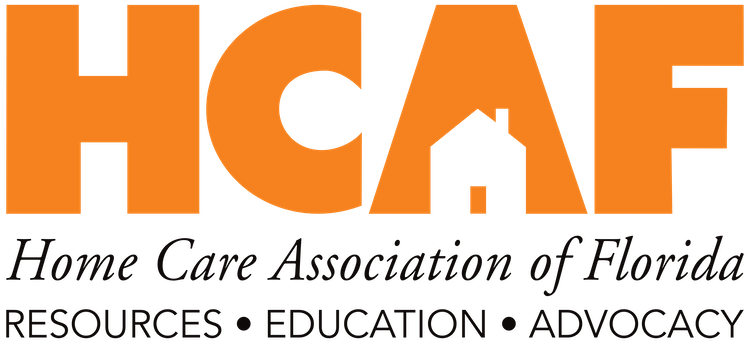Medicaid Mandate on Home Health Pay Prompts Calls for Leeway

Medicaid Mandate on Home Health Pay Prompts Calls for Leeway
By Cici Yongshi Yu, Bloomberg (July 12, 2023)
State Medicaid agencies are urging federal regulators to give them more flexibility to determine how home health and other direct care workers are compensated.
The Centers for Medicare & Medicaid Services in May proposed that a minimum of 80% of Medicaid payments for homemaker services, home health aide services, and personal care services go directly to pay workers. The remaining 20% goes to pay for overhead and administrative costs.
The Medicaid proposed rule (RIN: 0938-AU68), which has received more than 2,000 comments from the public, aims to increase access to care by addressing home- and community-based care workforce shortages due to low pay. Over 3 million home health and personal care aides earned a median wage of $14.87 in 2021, based on US Census data.
The industry faces challenges as demand for care rises and workforce stability diminishes. A 2022 report by the American Network of Community Options and Resources (ANCOR) revealed that 83% of providers decline new referrals, 63% have ended services, and 55% are contemplating additional discontinuations due to high turnover and vacancies.
Home- and community-based care workers serve a variety of targeted population groups, such as older adults, children, and adults with intellectual or developmental disabilities, physical disabilities, mental health or substance use disorders, and complex medical needs.
“States are suggesting that CMS give them more flexibility to determine, based on the circumstances of a state’s economy and the array of providers who are available, give them more flexibility to determine what that percentage should be,” said Kate McEvoy, executive director of the National Association of Medicaid Directors.
In Illinois, for example, nine state home- and community-based care programs have different rate methodologies. Personal support workers who assist aging adults and persons with physical disabilities must be reimbursed at a rate of 77% by providers. However, the current rate structure doesn’t include a pass-through requirement in services for adults with developmental disabilities.
“It is going to require states like ours to potentially revamp our entire rate structures and could increase the overall cost of care because then providers will have to somehow figure out a way to manage to redirect or identify other resources to put in direct service,” said Josh Evans, the president of the Illinois Association of Rehabilitation Facilities.
He added the 80% mandate would further restrict the flexibility of providers to use resources to increase compensation to retain tenured staff or increase starting wages to attract potential applicants.
Inadequate Reimbursement Rates
Direct support organizations are concerned the proposed rule fails to address the root cause of the direct care workforce crisis: inadequate Medicaid payment rates.
“We’re suggesting that states should have the ability to set their own reimbursement rates that meet the necessary cost to support the service, but there should be expectations that the reimbursement rate is adequate to support the service,” said Lydia Dawson, director of policy, regulatory, and legal analysis at ANCOR.
Dawson said she is concerned about whether the 20% of the Medicaid reimbursements that home health and other direct care companies could retain would adequately cover overhead costs. She also said reimbursement rates aren’t keeping up with rising living costs, inflation, and higher service expectations.
The CMS’ uniform approach fails to consider the unique challenges for states like Florida, where the state Medicaid program has been neglected for decades, said Kyle Simon, director of government affairs and communications of the Home Care Association of Florida.
“The 80-20 threshold would not be a problem if we had adequate reimbursement rates,” Simon said. The state legislature implemented a $15 minimum wage in 2022 for Medicaid direct care workers, and the Medicaid reimbursement rate for home health aide visits is $18.04 per visit, ranking among the lowest in the nation.
‘Feasible’ Solution
Health-care worker unions strongly support the proposed rule, saying it would promote home care and economic justice, and create a respectful work environment for women.
A 2022 PHI report shows that 87% of direct care workers are women, 61% are people of color, 27% are immigrants, and 44% live in or near poverty.
“This was a well-thought-out proposal,” said Arnulfo De La Cruz, the president of SEIU Local 2015, a California labor union chapter with more than 400,000 long-term care workers. “They are really important steps to stabilize the home care workforce by making sure that these workers are respected, protected, and paid well, especially given the experience of home care workers after the pandemic.”
Medicaid funds, considered taxpayer dollars, are intended to compensate workers providing dignified services to individuals living at home, said Ali Kronley, vice president of SEIU Healthcare Pennsylvania.
The proposed payment rate will ensure consistency of “efficiency, economy, and quality of care” across the industry and should be easily attainable for efficiently operating providers, said Marlishia Aho, regional communications manager of 1199SEIU, the Massachusetts union division for more than 60,000 home care workers.
She pointed to a similar minimum payment rate policy for nursing homes in Massachusetts, which requires allocating at least 75% of total facility revenue to the direct care workforce.
“We know it’s feasible as we’ve seen with nursing homes in addressing some workforce shortages, but we also urge CMS to clarify that this new permissible standard is intended to apply to all individual agencies, not just on an aggregate level about the industry,” Aho said.
Transparency Viewed as Key
Another provision of the rule would require states to report annual payment percentages for direct care worker compensation and publish the average hourly rate paid to direct care workers biennially.
To ensure the underlying reimbursement rate is adequate, Dawson of ANCOR said transparency into the state’s justification of the ratings and regular reviews of rates are important.
Kathy Febraio, president of the New York State Association of Health Care Providers, said the CMS requirement would be a start, but she has concerns the authority would not request the appropriate data for rate assessment and that it could burden agencies with additional administrative tasks.
Additional Info
Related Links : https://news.bloomberglaw.com/health-law-and-business/medicaid-mandate-on-home-health-pay-prompts-calls-for-leeway
